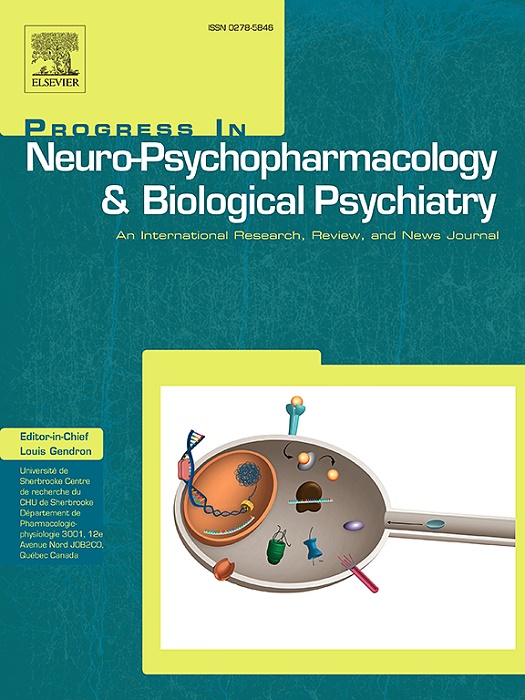Subdiaphragmatic vagotomy reduces hypothalamic oxytocin expression and blood levels after oral MDMA administration in male rats
IF 5.3
2区 医学
Q1 CLINICAL NEUROLOGY
Progress in Neuro-Psychopharmacology & Biological Psychiatry
Pub Date : 2025-01-22
DOI:10.1016/j.pnpbp.2025.111260
引用次数: 0
Abstract
3,4-Methylenedioxymethamphetamine (MDMA) is a widely recognized entactogen frequently used recreationally. It is known for its interaction with the serotonin and oxytocin systems, which underlie its entactogenic effects in humans. Recently, we demonstrated that the gut-brain axis, mediated by the subdiaphragmatic vagus nerve, contributes to MDMA-induced resilience enhancement in rodents. This study investigates whether subdiaphragmatic vagotomy (SDV) affects plasma oxytocin levels and the expression of oxytocin and c-Fos in the hypothalamus following a single oral dose of MDMA in rats. SDV significantly reduced baseline plasma oxytocin levels and oxytocin expression in the paraventricular and supraoptic nuclei of the hypothalamus. Furthermore, SDV markedly attenuated MDMA-induced increases in plasma oxytocin and the expression of oxytocin and c-Fos in these hypothalamic regions. These findings suggest that the subdiaphragmatic vagus nerve plays a critical role in brain-body communication, mediating MDMA's pharmacological effects on the oxytocin system.
求助全文
约1分钟内获得全文
求助全文
来源期刊
CiteScore
12.00
自引率
1.80%
发文量
153
审稿时长
56 days
期刊介绍:
Progress in Neuro-Psychopharmacology & Biological Psychiatry is an international and multidisciplinary journal which aims to ensure the rapid publication of authoritative reviews and research papers dealing with experimental and clinical aspects of neuro-psychopharmacology and biological psychiatry. Issues of the journal are regularly devoted wholly in or in part to a topical subject.
Progress in Neuro-Psychopharmacology & Biological Psychiatry does not publish work on the actions of biological extracts unless the pharmacological active molecular substrate and/or specific receptor binding properties of the extract compounds are elucidated.

 求助内容:
求助内容: 应助结果提醒方式:
应助结果提醒方式:


